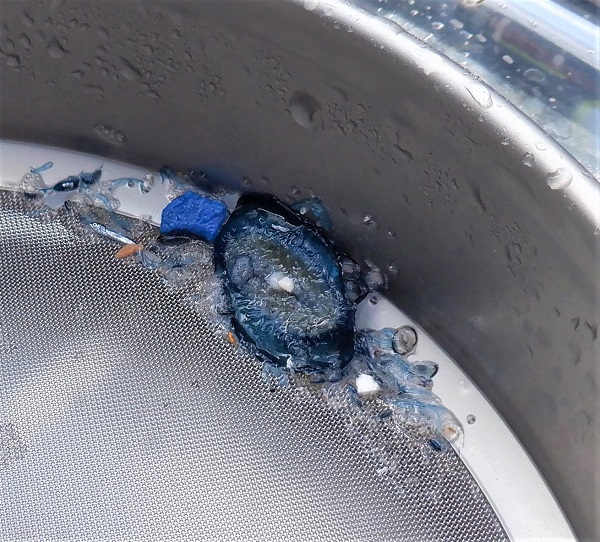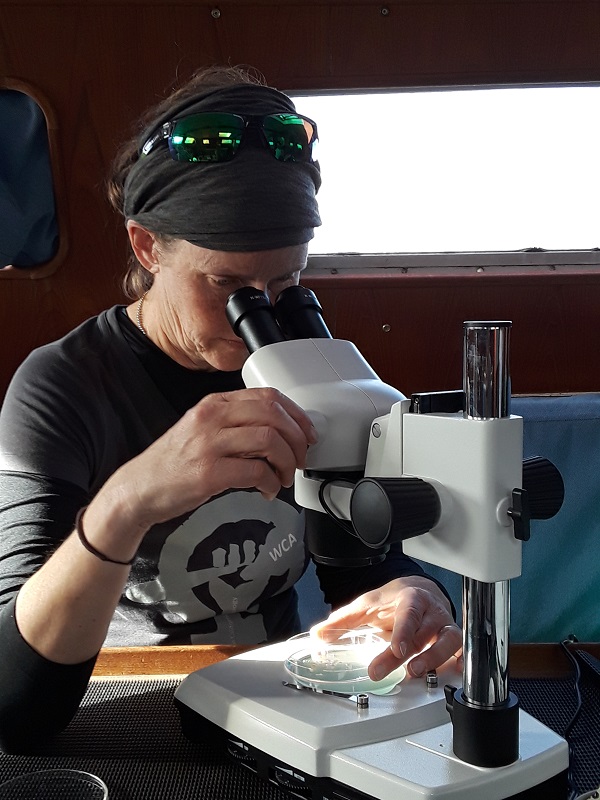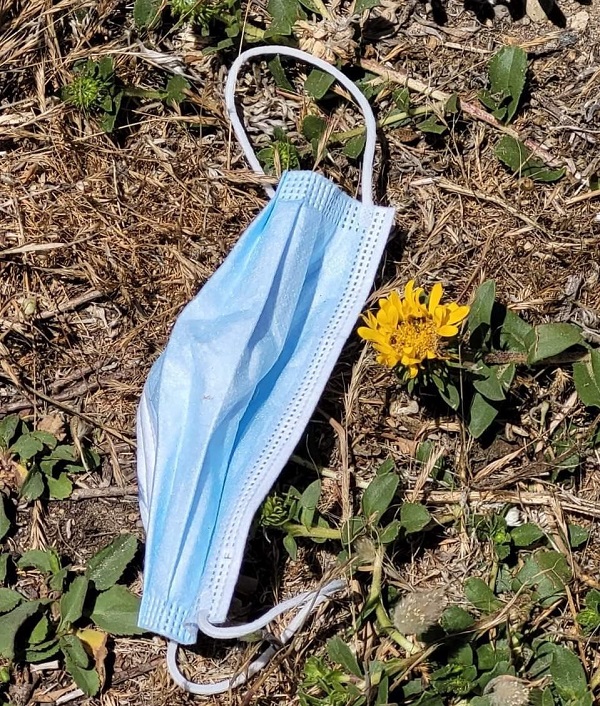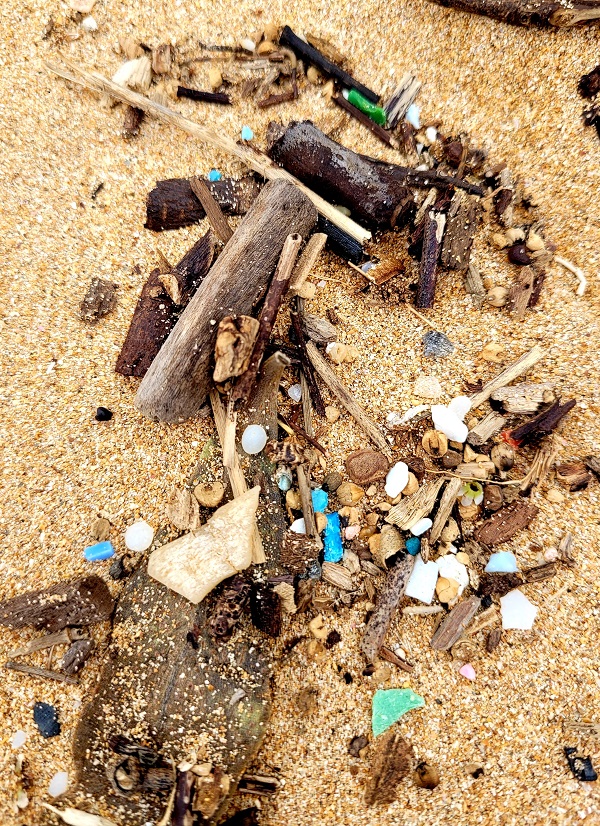Climate Stories!! How HARC has adapted Storytelling Methods to Share Archaeological Sites at Risk from Changing Climates
By Allyson Ropp, Ph.D. Candidate, East Carolina University Think back to your favorite story. What…
Kimberly J. Wooten, Archaeologist, Cultural Studies Office, California Department of Transportation
July 1st marks the beginning of Plastic Free July, a month focused on encouraging the public to actively participate in reducing their daily plastic footprint. These personal actions help reduce our carbon footprint at the same time, as plastic is – in the most basic terms – a petroleum biproduct. In addition, plastic production is currently one of the fastest growing industrial contributors to climate change. In 2021, 300 million pounds of plastic was produced globally, with the amount of plastic waste entering our ocean systems jumping from 8 million tons in 2018 to 14 million tons in 2021 (IUCN 2018, 2021). Much of this plastic pollution comes in the form of single-use plastic packing. Single-use plastics are not generally the consumer’s intended purchase, but simply the packing that hold the real product, including items such as food wrappers, condiment packets, straws, plastic bottles, grocery bags, etc. Single-use plastic products also include plastic utensils, take-out boxes, to-go cups, and other items that make our lives seemingly more convenient but contribute to overflowing landfills. This change in plastic use is something we can strive for in our personal lives, as well as in our professional ones, where archaeological labs are filled with a variety of plastic items, including baggies, containers, pipettes, petri dishes, etc.
Once discarded, this overwhelming abundance of plastic waste potentially enters our global oceans by traveling from terrestrial locations, inadvertently washing down rivers and coastal locations. This same waste washes back ashore, cluttering remote beaches and creating masses of plastic pollution that interfere with marine life, habitats, and impact archaeological sites. These waste landscapes are made worse with the knowledge that only 10% of the plastic entering the oceans remains buoyant – shifting between shore and sea – with the remaining waste sinking below the surface. A relatively new term is being used in regard to international refuse management: waste colonialism. Penned by journalist Ruth Michaelson (2021), waste colonialism describes the process of consuming nations sending their waste to nations that often don’t have the processing capacity or infrastructure to handle the volume or content, creating dire refuse conditions in the recipient country. The material culture of plastic waste, with its limited reuse and long-term viability in the environment in terms of hundreds of years, is also the main contributor to waste colonialism. Even more insidious, as this plastic pollution enters the environment, it breaks down into microplastics that are small enough to be found in rain and snow, growing in plants, and even within the human body (Parker 2022) (Figure 1).

That is a lot of plastic waste – or another way to think about it – a lot of archaeology. I am both an archaeologist and an environmental activist, advocating for the use of archaeology as a platform for raising public awareness about climate change, including the global plastic pollution crisis. At the same time, I recognize that plastic is a creating a monumental shift material culture, delineating the Anthropocene Era with new maritime and terrestrial archaeological deposits globally. From this perspective, it is difficult not to see plastic pollution as an issue to be explored and studied through contemporary archaeology.
In the beginning of October 2019, I set sail with 13 other women on a two-week, 1600 nautical mile journey to study microplastics in the world’s oceans (Figure 2). Microplastics are decayed and fragmented plastic from larger objects – plastic bottles, oil drums, fishing nets, food packaging waste – generally measuring less than 5 millimeters across. As with intact plastics, microplastics can be found in both in the ocean and on land, often sifting down into the stratigraphic layers of water and soil. On occasion the product itself is small enough to be considered a microplastic, as with nurdles (see Figure 3). Weather permitting, microplastic samples were collected daily, and women from multiple nations and professions learned about plastic pollution, advocacy and activism, data collection, analysis, along with open ocean sailing skills.

As Valerie Hall wrote in the very first Heritage at Risk Committee (HARC) blog in 2018 “… HARC’s key goals include increasing advocacy efforts at the national and international levels, promoting expansion of heritage at risk themes at the annual conference, and increasing collaboration both with other committees within SHA and with professionals outside of the membership who study the impacts of climate change on our shared cultural resources.” The Heritage at Risk Committee has focused on the impacts of the climate crisis on archaeological resources ranging from coastal erosion and sea level rise, to damage to archaeological collections from hurricanes and wildfires. The committee looks at current and projected impacts to heritage sites, the methodologies to understand these growing impacts, and heritage monitoring to mitigate damages. Part of those climate impacts going forward may include adapting archaeological methods to understand changes in material culture, if not in form itself, then in the fabrication to plastic.
There have been multiple archaeological studies of contemporary waste, including both purchase and disposal patterns, with the most well-known being William Rathje’s (2002) Tucson Garbage Project. Other archaeological studies include material culture patterning of park litter, unsheltered camps, landfills, Burning Man city layout and refuse, and foreshore litter. Some studies have practical applications, including several campus litter studies which are used both to understand litter deposition and for teaching archaeological methods to students. Other studies use apps to crowd source and record plastic refuse data in ways that mirror archaeological survey. All these studies include plastic refuse by the nature of their post-1950s archaeology, after which plastic became much more common. Beginning with the Covid pandemic in 2020, archaeologists began recording pandemic-related waste, including categories for face masks, many of which are single-use plastic-based products (Figure 3).

In contrast, few studies have been conducted with the specific intention of using traditional archaeological methodologies to examine the impacts of plastic waste on heritage sites. Harold Mytum and James Meek (2021) conducted excavations at Castell Henllys, an Iron Age site in Wales, specifically to look at plastic waste. They divided the fort’s two reconstructed roundhouses into quadrants and focused on known activity areas of modern school children. While the roundhouses were experimental reconstructions, the excavations employed traditional methodologies, and the data collected and processed in a way that way both applicable to a known toolkit of archaeological techniques. In populated areas, such as highway corridors and urban neighborhoods, modern refuse often intrudes upon archaeological deposits and plastic waste is commonly noted on site records and during excavations as disturbance. Future studies of archaeological sites may move beyond this simple notation to include analysis of soils samples to see the depths to which microplastics have migrated into site soils (Figure 4).

Earlier this year, the United Nations signed an historic agreement to control plastic pollution (United Nations 2022). The End Plastic Pollution: Towards an International Legally Binding Instrument resolution was endorsed by 175 member nations. The treaty’s language is directed at both single-use and microplastic pollution, looking at new ways to approach plastic waste, such as circular economies and sustainable consumption. In the United State, California passed Senate Bill 54 – Solid Waste: reporting, packaging, and plastic food service ware – on June 30, 2022. This bill provides the strongest plastic pollution legislation in the nation, requiring all single-use packaging to be either compostable or recyclable by 2032 (https://leginfo.legislature.ca.gov/faces/billTextClient.xhtml?bill_id=202120220SB54).
Plastic pollution – including single-use plastics, discarded plastic products, and microplastics – negatively impacts terrestrial and maritime heritage resources. Going forward, it is important that historical and contemporary archaeologists develop a methodology to understand the and impacts of plastic waste to archaeological resources. Part of that discussion needs to be the methodologies and artifact typology to record plastic refuse. Ideally, this methodology needs to include a public outreach component that advocates for climate change and tangible plastic pollution solutions. With our hands directly on the material culture of plastic and our understanding of historical consumer behaviors of purchase, use, reuse, and disposal, who better to discuss the translation of these behaviors to the public?
If you would like to participate in Plastic Free July, visit https://www.plasticfreejuly.org. Other online resources for increasing plastic pollution awareness and tools to combat it include the Story of Stuff (https://www.storyofstuff.org/) and Beyond Plastics (https://www.beyondplastics.org/).To discuss plastics in an archaeological context further, please feel free to reach out to the author at kimberly.wooten@dot.ca.gov.
References:
International Union for Conservation of Nature (IUCN)
2018 Issues Brief: Marine Plastics. Gland Switzerland. <https://www.iucn.org/sites/dev/files/marine_plastics_issues_brief_final_0.pdf>.
2021 Issues Brief: Marine Plastics. Gland Switzerland. < https://www.iucn.org/resources/issues-briefs/marine-plastic-pollution>.
Michaelson, Ruth
2021 ‘Waste colonialism’: world grapples with west’s unwanted plastic. The Guardian. < https://www.theguardian.com/environment/2021/dec/31/waste-colonialism-countries-grapple-with-wests-unwanted-plastic>.
Mytum, Harold, and James Meek
2021 The Iron Age in the Plastic Age: Anthropocene Signatures at Castell Henllys. Antiquity 95(379):198-214.
Parker, Laura
2022 Microplastics are in our bodies. How much do they harm us? National Geographic. < https://www.nationalgeographic.com/environment/article/microplastics-are-in-our-bodies-how-much-do-they-harm-us>.
Rathje, William L.
2002 Garbology: The Archaeology of Fresh Garbage. In Public Benefits of Archaeology, Barbara J. Little, editor, pp. 85-100. University Press of Florida, Gainesville, FL.
United Nations
2022a Nations sign up to end global scourge of plastic pollution. UN News.
< https://news.un.org/en/story/2022/03/1113142>.
Upcoming publications include:
Kimberly J. Wooten
2022 Global Impacts: Citizen Science and the Archaeology of Ocean Plastics. Citizen Science in Maritime Archaeology. University of Florida Press, Gainesville, FL.
2023 The Shape of Things: Archaeology, Environmentalism, and Plastic. Historical Archaeology. In review.